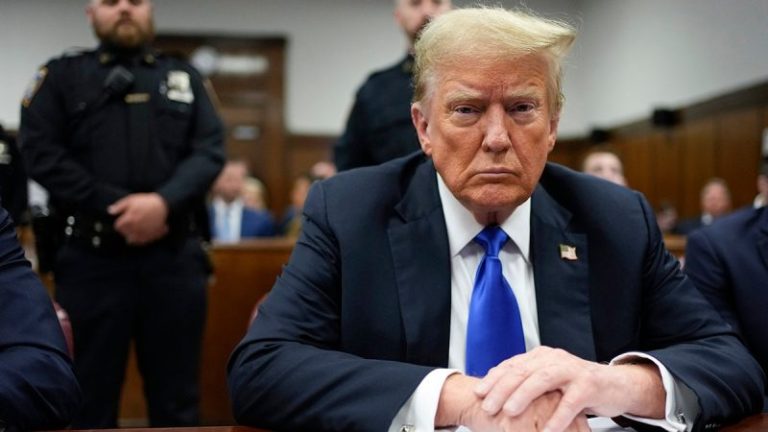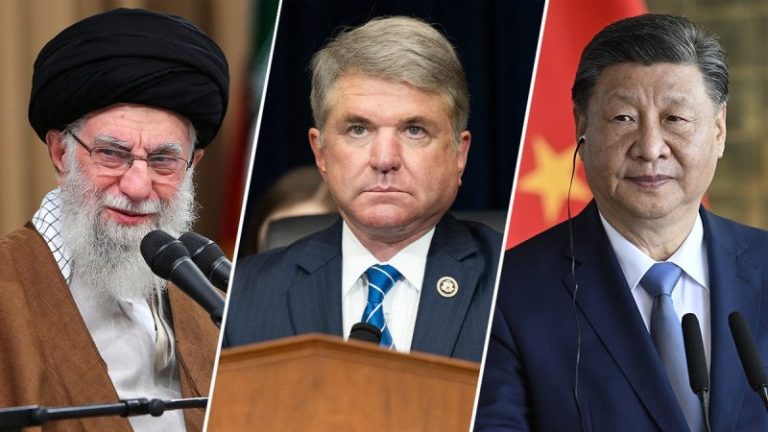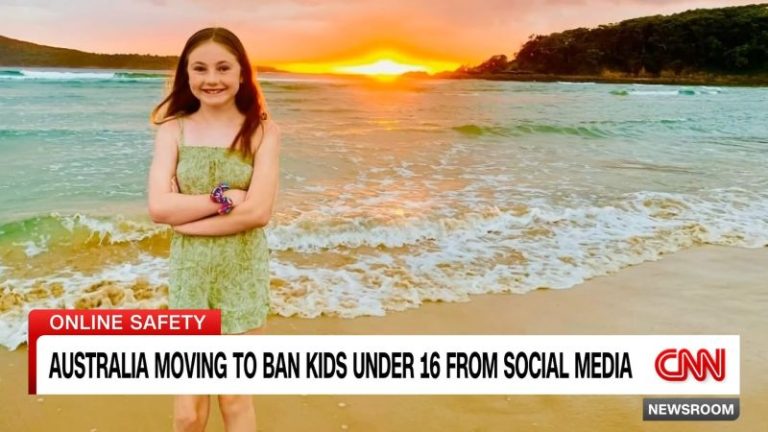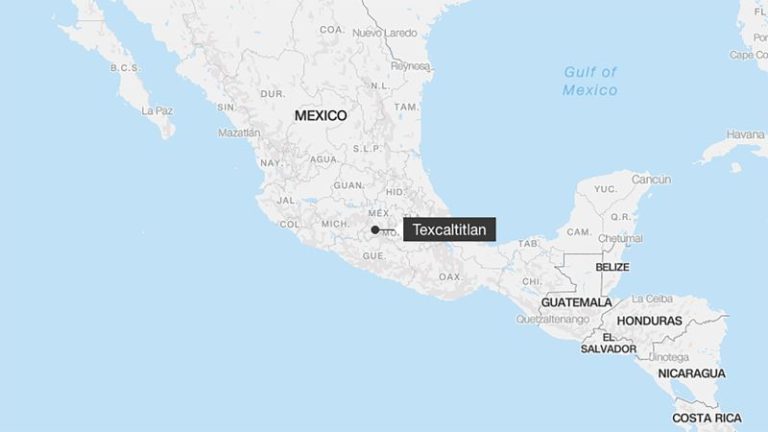Kirra Pendergast talks to thousands of teenagers each year in her role as a cyber safety educator.
She knows what they get up to online – the texting, the bullying, the sextortion, the threats – but nothing prepared her for the hostility she faced this month in a roomful of students ages 12 and 13.
She’d been booked to give three talks at a high school in Australia but just minutes into the first session, a group of boys started shouting insults common among misogynistic online influencers about the women pictured on Pendergast’s presentation.
Teachers tried to shush them, then a girl in the front row made the final expletive-filled comment that shattered Pendergast’s veneer and saw the special guest speaker flee the room in tears.
“I can’t believe I’m crying on film on here,” Pendergast said in a selfie video filmed soon after in her car. “I believe that the behavior that I witnessed today is completely driven by things that they’ve seen online,” she said.
“In fact, I know it is, and it has to change.”
Pendergast, the founder and CEO of global cyber safety training company Safe on Social, once opposed a ban on social media for children, but now she’s totally on board.
The Australian government introduced what it’s called “world-leading” legislation in parliament this week to wipe social media accounts – including Snapchat, TikTok, Facebook, Instagram, Reddit and X – from the devices of children under 16.
If passed, the law would see courts impose fines of nearly 50 million Australian dollars ($32 million) on social media companies found not to have taken reasonable steps to prevent age-restricted children from using their service.
The government is not telling tech companies how to do it, but at the very least, it says it expects them to adopt age verification technologies. That comes with privacy issues that the government said will be addressed in the legislation.
But critics aren’t convinced.
They say it’s a rushed piece of legislation driven by political maneuvering ahead of a federal election, one that could push children who flout the rules deeper into unregulated areas of the internet.
Supporters say if it saves one life, it’s worth it.
In recent months, two more young girls have joined a growing list of children who have taken their own lives after allegations of online bullying.
Charlotte O’Brien died in September, followed by Ella Catley-Crawford – both were 12, and their families say they were targeted by bullies who taunted them through Snapchat.
In Ella’s case, girls allegedly catfished her by pretending to be someone else on the app and spread private videos she sent.
“SOCIAL MEDIA BULLYING IS REAL,” her relatives said in bold caps on a GoFundMe page set up to raise money for her funeral.
Charlotte’s parents Matthew Howard and Kelly O’Brien have since joined the campaign to push for a ban on social media for under 16s. They’re acting on Charlotte’s last request – an appeal to them to raise awareness.
How to get help
Help is available if you or someone you know is struggling with suicidal thoughts or mental health matters.
In the US: Call or text 988, the Suicide & Crisis Lifeline.
Globally: The International Association for Suicide Prevention and Befrienders Worldwide have contact information for crisis centers around the world.
Earlier this month, they travelled to Canberra to present the prime minister with a petition then signed by 124,000 people – the world’s largest on the topic – calling for the age limit for social media to be raised 36 months from 13 to 16.
Dr. Danielle Einstein, clinical psychologist and author, says schools are navigating a minefield of interactions that are playing out online, outside school hours, on platforms that are beyond their reach.
“Teachers are under so much pressure to solve the fact that the culture has been undermined by social media, by this sort of mean behavior that subtly is being permitted to exist, just because it’s so hard to stop,” she said.
Einstein supports the social media ban because she believes phones and group chats are replacing face-to-face interactions that teach children how to connect with people and resolve conflict.
“All of a sudden, any errors they make are broadcast and they go straight out to a whole group,” she said. “They don’t have the opportunity to make these little mistakes, and for the mistakes not to matter.”
Agreement between the major political parties is rare in Australia, but on this issue, they’re presenting a united front.
The Liberal opposition party proposed a social media age limit in June that was backed by the prime minister, then all the state and territory leaders.
“I want to talk to Australian parents,” Prime Minister Anthony Albanese said in a video posted to Instagram, one of the targets of the ban.
“Too often social media isn’t social at all, and we all know that. The truth is it’s doing harm to our children, and I’m calling time on it,” he said.
Dany Elachi called time on it in his household a few years ago, when he and his wife caved into their daughter’s demands to use their old smartphone. She was 10 at the time.
“The straw that broke the camel’s back, I think, for her mom and I was catching her messaging friends under the covers at midnight. And so, we just connected all these dots together. We thought, we can’t do this for another 10 years.”
They started the Heads Up Alliance to encourage other parents to delay giving smartphones to their children, and since then their network has grown.
Elachi says there’s no question that social media is harming Australian kids.
“Parents are seeing with their own eyes. I mean, there are suicide notes. Children who’ve killed themselves write their suicide notes, telling us that social media played a role in their deaths, and we’re seriously still debating whether social media is harmful to our children’s mental health?”
“It’s actually disgraceful.”
For many experts, the debate’s not so much about the negative effects of social media – but whether an outright ban is the right response.
Last month, more than 140 experts sent a joint letter to the government saying the ban is a “blunt” response to the problem that removes the incentive for tech companies to invest in more ways to keep children safe online.
This week, a joint select committee investigating social media in Australia seemed to agree. Its final report, after months of public hearings and hundreds of submissions, did not call for a ban.
Instead, it recommended that laws be changed to “effectively bring digital platforms under Australian jurisdiction,” and that any changes that affect young people should be “co-designed with young people.”
Amanda Third, co-director of the Young and Resilient Research Centre at Western Sydney University, says for many children, the current sign-up age of 13 is “entirely appropriate.”
“The idea of a ban is incredibly seductive for parents, because it feels like it’s just going to take that off your list of things to worry about,” she said. “But in actual fact, a ban is not going to deliver the relief that parents are looking for. It’s a fact of life that this will continue to be a key part of parenting into the future.”
She believes calls for a ban are “motivated by political and economic issues.” The two major parties that support the ban will contest a federal election next year. And media heavyweight News Corporation, which has pushed for the ban, has a separate dispute with Meta, the owner of Facebook and Instagram.
Meta announced in March it would stop paying Australian providers for news, provoking a furious reaction from News Corp, the dominant player in Australia’s highly concentrated news industry.
News Corp Australia executive chairman Michael Miller delivered a nationally televised speech in June calling for the government to push Meta to pay, saying, “We can’t let ourselves be bullied.”
News Corp had launched its “Let Them Be Kids” campaign the month before, telling the stories of children harmed by social media and pushing for a ban for under 16s.
News Corp-owned The Courier Mail recently credited the campaign with leading discussion around “the damage caused by tech platforms to young people … with that reporting now set to result in seismic changes to online laws.”
There’s a long way to go before any ban comes into place. Even if it becomes law, the government says it’ll give tech companies 12 months to comply, with the switch-off date to be set by the communications minister.
In its submission to the joint committee, the Digital Industry Group Inc. (DIGI), which represents social media companies in Australia, said research to date had not established “a direct causal link between social media use and youth mental health issues in Australia or globally.”
DIGI, whose members include Meta, Snap, TikTok and X, said it shared the government’s commitment to improving online safety.
X owner Elon Musk was less diplomatic in a post on his social media platform. The self-proclaimed “free speech absolutist” and close ally of US President-elect Donald Trump, posted that the ban “seemed like a backdoor way to control access to the Internet by all Australians.”
Other providers have made an effort to engage on the issue.
Snap Inc., whose messaging service Snapchat was allegedly used to bully Charlotte O’Brien and Ella Catley-Crawford, said “bullying has no place” on the app, and has encouraged children who have problems to block and report offenders.
Instagram, owned by Meta, recently paired up with Kids Helpline in an anti-bullying campaign “How do you mean?” that asks content creators how they cope with bullying online. Asked why they wouldn’t just log off, some said it would be “unfair and unrealistic” to leave because their community, friends and family are online.
The message was that “everyone faces mean behavior” but there are ways to deal with it – notably pressing a button to report and block – before seeking adult help.
Some parents believe there’s enough mean behavior in real life, without adding social media to the mix – especially in junior high, a time, Einstein the psychologist says, when children are forming friendship groups, and sometimes ostracizing classmates who for whatever reason aren’t deemed to fit in.
Pendergast, the cyber safety educator, says she’s seen enough mean behavior in her travels to schools across the country to know that something needs to change.
“If a simple rule protects just one child and helps them grow into a strong, resilient young person with their privacy intact, isn’t that worth it?” she wrote in a Facebook post.
“Why would we deny a child that protection? Why is child online safety being treated like a political game? And why has the debate over ‘ban or no ban’ turned into a competition, when the only ones losing while we argue are the kids?”
This post appeared first on cnn.com










